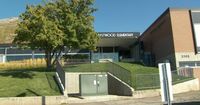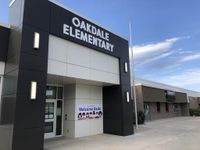Across the United States, the familiar sound of the school bell is fading in many neighborhoods, replaced by uncertainty and the hum of community debate. From Memphis to Atlanta, St. Louis to suburban Utah, public school districts are grappling with a sobering reality: declining student enrollment, aging facilities, and dwindling budgets are forcing administrators to consider closing, consolidating, or repurposing schools that have long stood as pillars of their communities.
In Memphis-Shelby County, the urgency is palpable. On September 23, 2025, education leaders recommended a sweeping plan: four schools—Ida B. Wells Academy, Frayser-Corning Elementary, Chickasaw Middle, and Georgian Hills Elementary—are slated for closure, while Lucy Elementary is set to be transferred to the Millington Municipal School District by the end of the 2025-2026 academic year. According to Chalkbeat, this move is just the first phase in a long-anticipated facilities plan, with a more comprehensive strategy expected by early 2026. The district faces a staggering $1.6 billion in repair and renovation costs over the next decade, and ten buildings are projected to reach the end of their useful life in that time.
The numbers are daunting. The five Memphis schools targeted for closure or transfer have immediate maintenance needs exceeding $6.5 million, with a projected $48 million in repairs over the next 20 years. "We’re being transparent through this process and listening to what people say," said Interim Superintendent Roderick Richmond during the recent presentation. The school board is expected to vote on these closures in February 2026, but the community’s voice will be heard first: at least two public hearings per school are scheduled between October and December, giving parents and residents a chance to weigh in and propose ideas for repurposing the buildings.
Memphis is not alone. In Atlanta, public meetings held on September 24 and 25, 2025, brought the community together to discuss the future of underutilized school facilities. Atlanta Public Schools (APS) has the capacity for 70,000 students but currently enrolls only 50,000—a gap that has prompted district leaders to consider closing multiple elementary schools, including F.L. Stanton, Dunbar, Peyton Forest, Humphries, Hutchinson, Cleveland, and Continental, starting with the 2027 school year. Some schools, like Scott and Usher Collier in the Douglass zone, would be combined into entirely new institutions, while others would be repurposed or rezoned. The district’s plan aims to reduce annual operational spending by at least $12 million and cut the number of underutilized facilities from 24 to 11. Further virtual and in-person meetings are scheduled for October and November, with a final vote expected at the school board’s November 3 meeting.
The trend stretches far beyond the South. In the Ville neighborhood of St. Louis, the echoes of empty school hallways speak to a deeper crisis. The area, battered by a spring tornado in 2025 and years of economic disinvestment, faces the threat of losing historic institutions like Sumner High School—alma mater to icons such as Tina Turner and Arthur Ashe. As Chalkbeat and local reports highlight, the closure or prolonged shuttering of such schools is not just a budgetary matter. For residents like Thomasina Clarke, it is a threat to the neighborhood’s memory, culture, and cohesion. Schools serve as lifelines, and their loss leaves a void that numbers alone cannot capture.
This struggle is mirrored nationwide. Urban districts are maintaining more buildings than they can support as enrollment drops and families increasingly turn to charter schools, private options, or homeschooling. The expiration of federal pandemic relief funds has only worsened the financial squeeze. Policymakers often cite efficiency, but the human cost is profound: when schools close, children are uprooted, communities fracture, and local histories risk being erased. The story of Sumner High, still closed due to tornado damage, illustrates the collision of economics, policy, and resilience. Yet, community initiatives—like turning school spaces into hubs for arts and museum programs—have offered glimmers of hope, drawing students back and rekindling pride.
In Utah, the Canyons School District is facing its own crossroads. As of September 24, 2025, a subcommittee of the Long-Range Planning Committee is conducting a boundary and enrollment study, reviewing eight elementary schools in Sandy and Cottonwood Heights. The district aims for schools to operate efficiently with around 550 students each, but some, like Bella Vista, had only 219 students last year and are projected to shrink further. Most of the buildings under review are about 50 years old, and annual operating costs—roughly $1.2 million per elementary school—remain the same regardless of enrollment size. Board member Karen Pedersen emphasized the complexity of the process: "We don’t want to have a domino effect. This is hard; we get that. We’re being transparent through this process and listening to what people say." Final recommendations are expected in the fall, with possible implementation in the 2026-2027 school year.
Behind the statistics and spreadsheets, the stories of students, teachers, and families come to the fore. In Memphis, district leaders have promised that teachers will be able to follow their students to new schools if openings exist, and the Ida B. Wells building is already earmarked for adult education or district operations. Yet, past closure plans have often fallen short: a 2024 draft plan called for 21 school closures, but only one has actually shut down. The district’s history is filled with similar examples, where ambitious promises met with the realities of community resistance, logistical hurdles, and the ever-present fear of state intervention.
In St. Louis, the fate of Sumner High may well determine whether the Ville remembers its legacy or lets it fade. Local nonprofits and passionate educators are fighting to keep schools as centers of creativity and community, even as population decline and budget cuts loom. In Atlanta and Utah, district leaders are balancing fiscal responsibility with the need to preserve neighborhood schools and minimize disruption to students’ lives.
One thing is clear: the debate over school closures is rarely just about bricks and mortar. It is about memory, hope, and the future of communities. As districts across the country weigh their options, they face a delicate balancing act—one that will shape the educational landscape for years to come.


